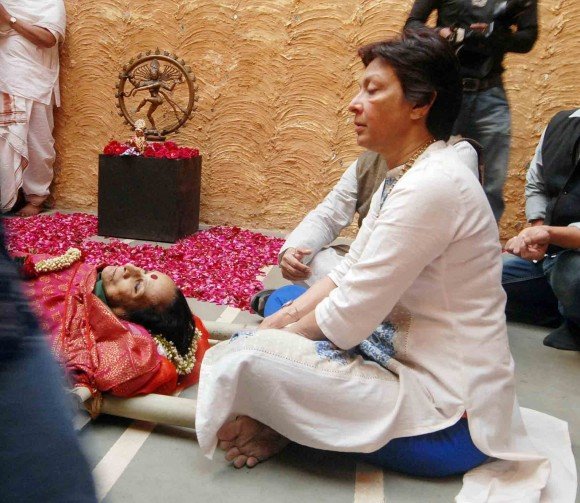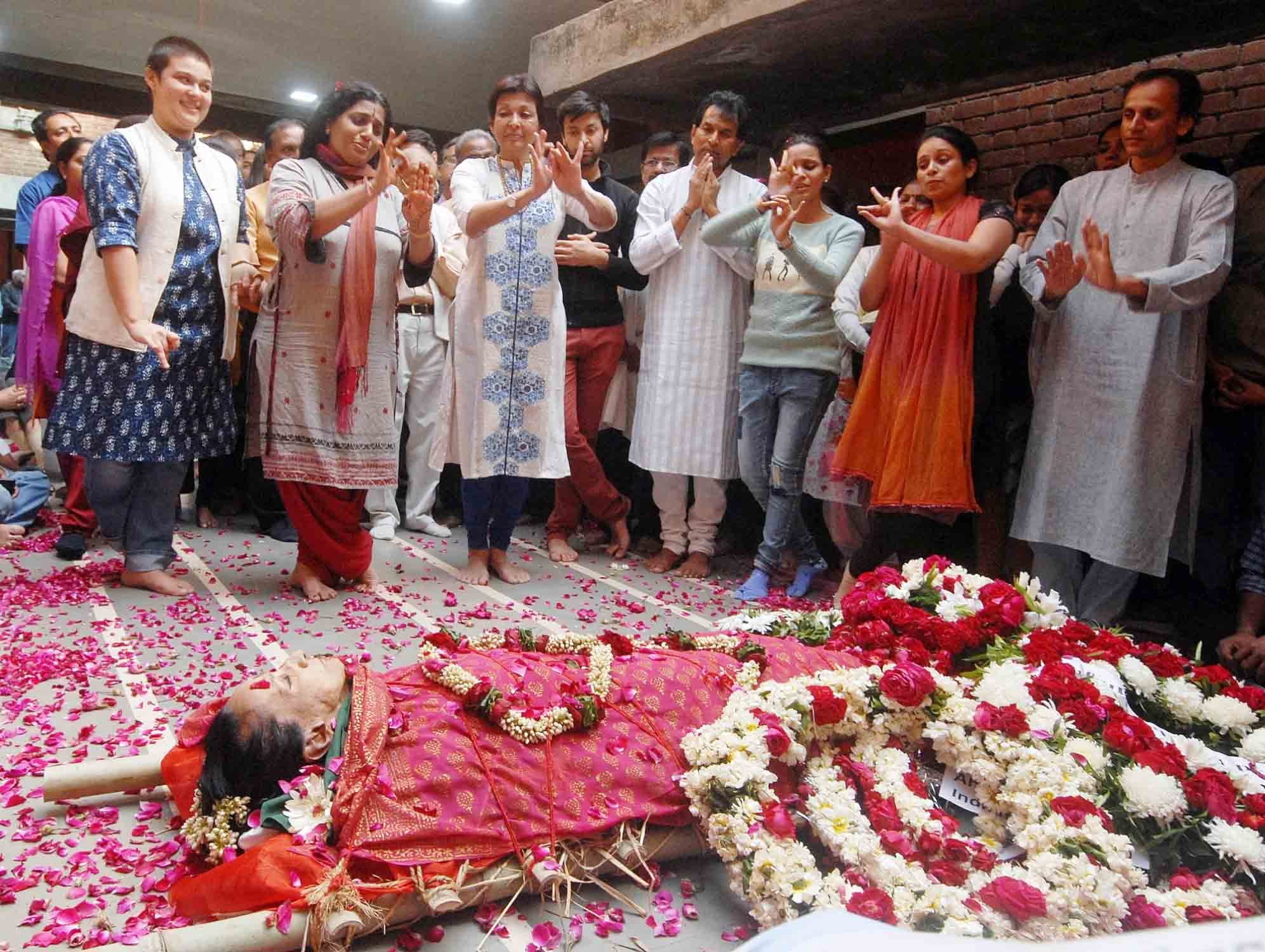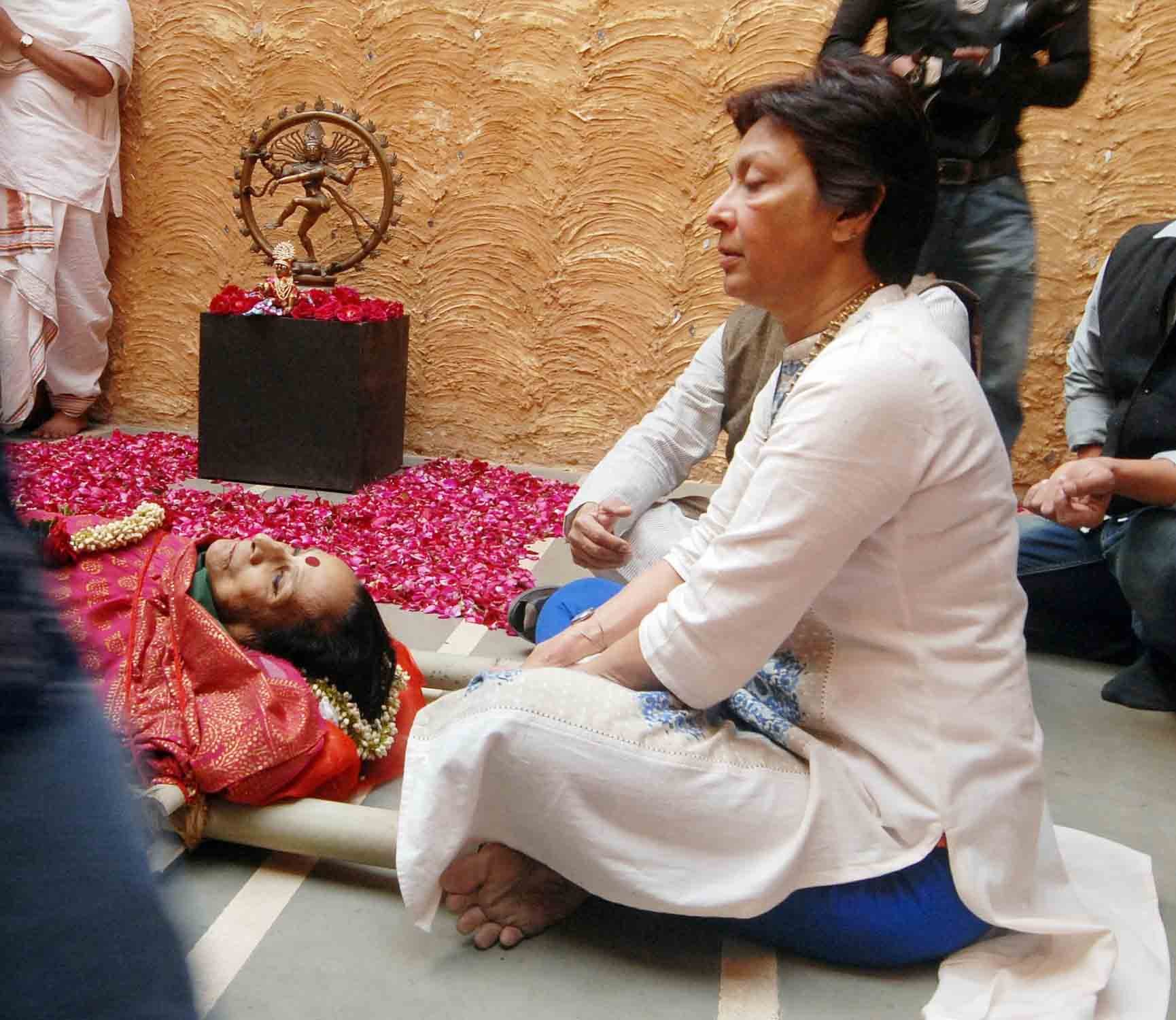Articles features
Mrinalini Sarabhai: High Priestess of Indian Classical Dance (Obituary)

Mrinalini Sarabhai has been a major influence on Ahmedabad's cultural life since 1948 when, with Vikram Sarabhai, she set up Darpana Academy, six years after her marriage with him. More importantly, she will be remembered as a legendary classical dancer and choreographer at the national level and abroad. Right from her first performance in Paris, she was recognized as the High Priestess of Indian Classical Dance.
If Rukmini Devi brought Bharatanatyam out of the temple to the open stage and accorded it dignity, Mrinalini steadied it there and gave it contemporary significance. Beginning with solo dances, she created choreographic works in which, while remaining rooted in the tradition and without moving away from its aesthetics, she projected themes socially relevant today. This was done chiefly in two dance forms - Bharatanatyam and Kathakali.
It required daring and a social vision for her to have projected in one of her earliest dance dramas the inhuman treatment of a bride for dowry. With the local folk dance and its costumes, she tellingly communicated with society. She traced the roots of violence in society to the days of the Mahabharat. Giving glimpses of our natural luxuriance in 'Meghdoot', she urged the modern Indian mind to let flowers bloom. On Western classical music she created 'Shakuntala', in which Shakuntala asks elders questions. Her 'Tasher Desh' celebrated the liberation of a stifled free impulse - and she performed it in China as well!
Rather than remaining confined to the centre, her Bharatanatyam freely spread in all directions with strength and clarity. Huge crowds earlier required Kathakali to be eminently spectacular. In 'Manushya', she performed with Chatunni Panicker. She did away with traditional costumes and make-up and portrayed man's evolution from birth till death. Son Kartikeya as a kid perhaps prompted it. That probably was the first Kathakali performance by a woman. Pandit Jawaharlal Nehru had special words of praise for this creation. Talking of daring innovations, she had daughter Mallika play the man in 'Nalakhyan' much later.
Endowed with exceptional intellect like her parents and husband, Mrinalini was a multi-talented personality. At an early age, she was Rabindranath Tagore's favourite at Shantiniketan. Like Tagore, Gandhiji remained her guiding force all through life. She was a trustee of Sarvoday Internantional Trust and held a special programme on Gandhi Jayanti days at Natarani, Darpana. She considered dance and drama as twin sisters. Her collaboration in giving artistic directorial touches to 'Koi Pan Ek Phoolnu-n Naam Bolo To' is still remembered. Besides poetry and an autobiography, she wrote dramatic scripts.
Four decades ago, she held a series of performances of original Gujarati plays. She supported research in the local indigenous folk form Bhavai. With an American scholar she translated 'Swapnavasavadatta'. Her 'Friends of the Tree' rushed to where trees were being felled.
Darpana's music section has a reputation. Puppetry had it earlier. Kuchipudi and Kalaripayattu are also taught here. Darpana, in fact, has become a tradition. In the family the tradition has been passed on from Mallika to Ravanta and Anahita. Many of us are privileged to have seen the four dancing on stage together.
Mrinalini had a fascination for Krishna - Krishan as 'ananda' permeating the universe. The glow and serenity on her face were, without exaggeration, to be seen to be believed. It seemed, everyone around her body agreed, she was ready to speak and demonstrate a 'mudra'!
(S.D. Desai is a veteran Ahmedabad-based art critic. He can be contacted on sureshmrudula@gmail.com)





































